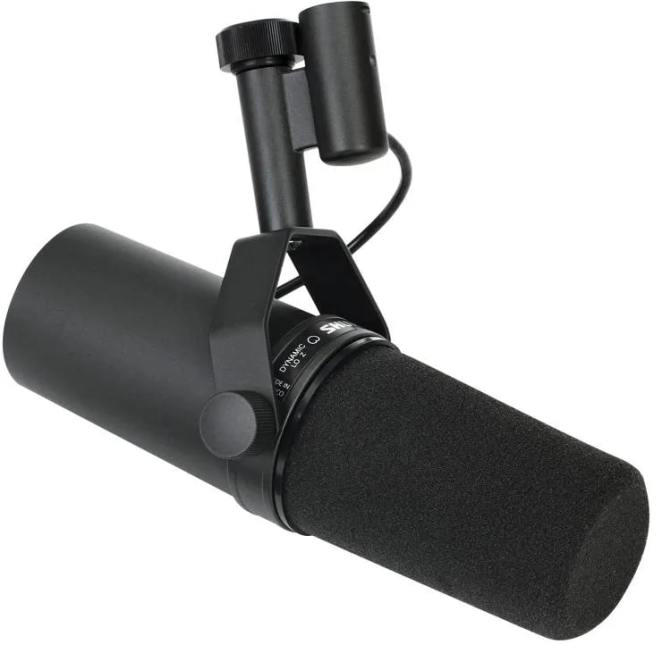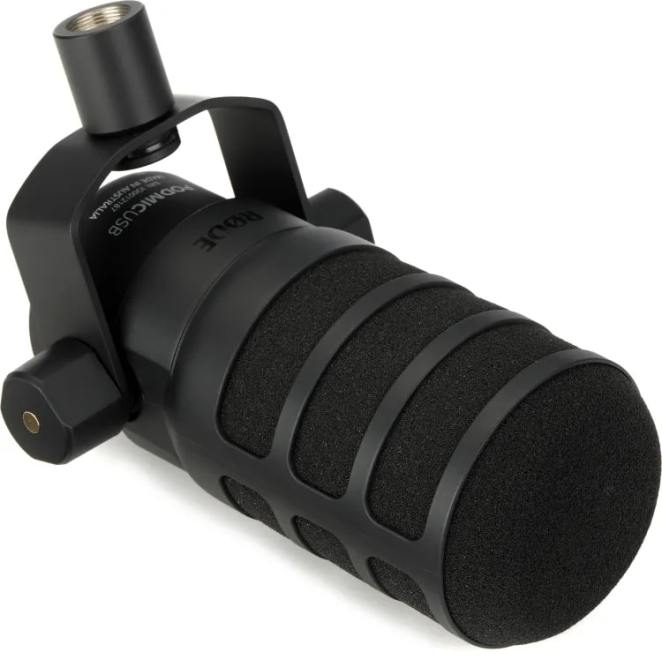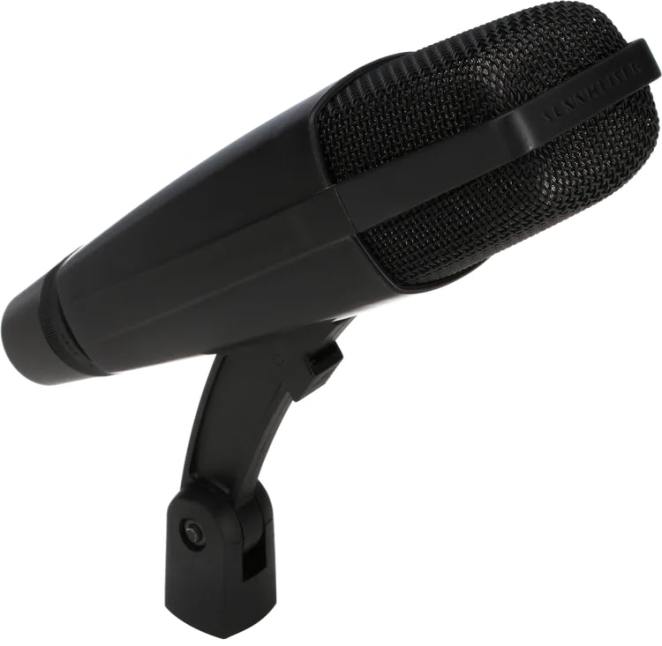When you buy through our links, we may earn an affiliate commission.
If you’re a professional streamer who’s serious about making content with superior sound quality, one of the most important pieces of gear to have is a good microphone. You need a mic that’s reliable, efficient, and has the design to meet the ever-changing needs every streamer comes up against.
Here we’ve selected our top picks for the best dynamic microphones for streamers that meet a number of needs. Our top choice is the Shure SM7B due to its wide frequency response, versatility, and quality.
We’ll also address some of the most important features to look for when shopping for a dynamic mic for streaming in our buyer's guide and FAQ section. From podcasting to social media, broadcasting to creating videos there’s something on this list for every streamer.
Let's take a look.
Quick Summary of the Best Dynamic Microphones for Streaming
- Shure SM7B (Best Dynamic Microphone for Streaming Overall)
- Audio-Technica ATR2100x-USB (Best USB/XLR Dynamic Microphone for Streaming)
- Electro-Voice RE20 (Best Dynamic Microphone for Broadcast)
- Rode PodMic USB (Best USB Dynamic Microphone for Podcasting)
- Sennheiser MD421 II (Most Versatile Dynamic Microphone for Streaming)
- Shure SM58S (Best Budget Dynamic Microphone for Streaming)
- Saramonic SR-HM7 UC (Best Digital Dynamic Microphone for Streaming)
Best Dynamic Microphones for Streaming
Best Overall
SPECS
- Polar Pattern: Cardioid
- Frequency Response: 50Hz - 20kHz
- Features: High-pass filter, presence boost, XLR connection, can withstand high sound pressure levels
One of the most important features that makes it so versatile is the dual-tone control that features a low-end rolloff and presence boost. This lets you add weight to a thinner source or tame harshness, which makes it ideal for male and female vocal sources regardless of the room environment.
The SM7B's internal shock mounting and suspension system reduces physical interference while electromagnetic shielding keeps hum to a minimum. The cardioid polar pattern has great off-axis sound rejection, and the yoke mounting provides ease of use.
Costwise it is a bit of an investment, but a worthwhile one. Considering how rugged Shure microphones are, you’ll likely be using the SM7B for quite a while.
Best USB/XLR Mic
SPECS
- Polar Pattern: Cardioid
- Frequency Response: 50Hz - 15kHz
- Features: 24-bit/192kHz conversion, XLR, USB, and ⅛” connectivity, USB bus power, can withstand high sound pressure levels
Many streamers prefer to connect their microphones through USB and skip the additional hardware needed to use an XLR connection so they can just plug and play. Due to how it is designed you can run the signal directly into a DAW without worrying about audio interfaces.
This model from Audio-Technica offers a lot of features that make it an ideal mic for streaming. Primary among them is the onboard 24-bit/192kHz analog-to-digital conversion. It ships with a USB-C to USB-C and USB-C to USB-A cables so whatever standard your device uses it’s easy to integrate.
A built-in headphone volume output lets you monitor and control the volume directly, and the XLR output lets you connect it to an interface or mixer if that’s how you prefer to stream. At just $79 it fits any budget and provides the versatility and utility that modern streamers need in a dynamic microphone. At this price point, you may be interested in our reviews of the best-selling mics under $100.
Best For Broadcast
SPECS
- Polar Pattern: Cardioid
- Frequency Response: 45Hz - 18kHz
- Features: XLR connection, Variable-D element minimizes proximity effect, good off-axis rejection, frequency curve designed for dialogue, high-pass filter
Along with the Shure SM7B, the RE20 is a legend when it comes to dynamic microphone use beyond music production. While they are very similar in design, there are some key differences.
The frequency range is broad across the spectrum and the Continuous Variable-D design feature means very little low end is introduced as a result of the proximity effect. A wind filter and integral blast covers help to reduce plosives and excess sibilance when used in a close micing situation like most streamers are.
A humbucking coil reduces any noise introduced by poor electricity, and the large diaphragm helps to deliver the clarity and articulation usually only found in condenser microphones. A low cut switch helps you get the low-end response just right. There’s a reason it’s been a gold standard in the industry since it was first introduced in 1968.
Best for Podcasting
SPECS
- Polar Pattern: Cardioid
- Frequency Response: 20Hz - 20kHz
- Features: XLR, USB-C, and ⅛” connections, built-in pop filter, onboard preamp with APHEX digital signal processing, headphone output for monitoring source signal, works with Windows, Mac, and Android devices
The Rode PodMic is one of the more interesting streaming dynamic mics. It is especially good for capturing vocal content, but the next-level features are what truly sets it apart from other microphones like it.
As far as connections go, it is an XLR mic that also sports a USB-C output to accommodate your workflow, whether you want to connect directly to a computer or mobile device or recording hardware. If you’re running it through the USB output you get access to the onboard Revolution preamp that provides as much gain as you need without introducing excess noise.
But what differentiates it from other models in the category is the onboard DSP from APHEX. This means you don’t have to be a trained audio engineer or dedicate time to post-production to get the best sound out of your streaming setup.
A headphone volume output with zero latency provides direct source monitoring and includes a level control. It’s cross-platform and compatible with Windows, Android, Mac, and iOS devices. The PodMic offers great features for streamers looking for versatility in a dynamic microphone, at an affordable price point to boot.
Most Versatile Dynamic Mic
SPECS
- Polar Pattern: Cardioid
- Frequency Response: 30Hz - 17kHz
- Features: 5-position low-end rolloff, feedback rejection, internal bass tubes provide more accurate low end
Dynamic microphones generally aren’t known for their tonal versatility like the reputation condenser microphones have, but that’s not the case with Sennheiser’s MD421 II. It is regarded as one of the most useful dynamic mics for recording instruments, but due to the sound options it provides it’s great for streaming too.
How useful it is for any application you throw at it is one of the reasons that makes it a perfect choice for streamers. It has tone-sculpting features that let you shape the sound through a microphone itself which normally would require additional processing - and workflow time.
Everything starts with the 5-position low-end rolloff switch. This lets you tailor the microphone’s pickup to any source, and it is a great way to control the proximity effect. Sennheiser makes some of the most durable mics in the industry, and the glass composite housing and stainless steel basket ensure this.
The downside: it's pricey for a dynamic microphone, and will be out of the price range for many. It also might be overkill for most streamers. But if you’re looking for a dynamic microphone that can handle any scenario and has the extra features to back that performance requirement up, the investment is worth it.
Best Budget Dynamic Mic
SPECS
- Polar Pattern: Cardioid
- Frequency Response: 50Hz - 15kHz
Features: On/off switch, frequency curve designed for vocals, built-in wind/pop filter
What can be said about the most legendary microphone of all time that hasn’t already been said? It sounds great on any source, it’s built like a brick house and meant to last a lifetime. The SM58S brings all of these enduring and appealing qualities with an extra feature that makes it ideal as a mic for streaming.
Unlike the standard SM58, this model is outfitted with an on/off switch that makes it a great choice for streaming. The spherical filter reduces breath noises, plosives, and pops and the cardioid pattern provides isolation while minimizing off-axis pickup and unwanted background noise.
The SM58 is a top choice for vocals in all aspects of audio production. And while streaming might not be the first thing that comes to mind, this model is a great, affordable choice. There is a reason it’s one of the most popular microphones in history.
Best Digital Dynamic Mic
SPECS
- Polar Pattern: Cardioid
- Frequency Response: 75Hz - 20kHz
- Features: USB micro-B and ⅛” output for headphone monitoring, USB bus power, Windows, Android, and macOS compatible
Dynamic microphones for streaming don’t get much better than this. With broadcast-quality audio, it is designed to directly integrate with laptop, desktop, and mobile devices. The SR-HM7 is just as useful for creating video content as it is for video chat calls.
Its wide frequency response is perfect for dialogue and vocals and the off-axis rejection means the signal is as clean as possible. The headphone output provides direct monitoring so you can make sure your levels are right quickly.
The SR-HM7 UC’s handheld design is intended to connect directly to a computer or mobile device without the need for additional hardware - if that’s the route you want to go. It comes in at a price point that is a little higher than a lot of dynamic mics, but its design offers a unique use that simplifies setup and utility.
Best Dynamic Microphones for Streaming Buyer's Guide
Shopping for a dynamic microphone for streaming presents unique challenges as opposed to one you are looking to buy for music production. The good thing is that a lot of the design elements and features translate to using it for streaming.
Let’s dive into some of the key things to look for.
Utility
The most important thing to consider when shopping around for a microphone to step up your streaming game is actually a simple question. What do you need it for? Every streamer has different needs, and since it is a broad practice you need to analyze how you will be using it.
Podcasters need something different from a microphone than streamers in the gaming community. Video content creators have their own specific film audio practices to follow if they want to create professional work.
Taking into consideration what you need out of the mic, as well as your hardware and environmental factors, is the first step to narrowing down your choices.
Polar Pattern
Dynamic microphones usually come with a fixed cardioid polar pattern. This makes them a go-to mic for many because that’s the ideal polar pattern for streaming. This specific pattern is designed to only pick up sound in front of it while rejecting off-axis sounds from the back and sides.
In a streaming situation, this presents a few benefits. The primary of a cardioid polar pattern is that since most streamers only need a microphone for dialogue, the off-axis rejection will keep any ambient sounds like playback to a minimum - or eliminate them altogether.
Secondly, if you've got something like a podcasting situation where there are multiple people speaking in turn, the off-axis rejection means you don’t have to worry about mic bleed from other voices if the microphones are positioned correctly.
Frequency Response
The frequency curve of a mic isn’t as big of a concern for streamers, as most dynamic microphones have one that’s designed for vocals and dialogue. But each model does have some specifics when it comes to their frequency response so it never hurts to look up the spec sheet of the one you’re considering to buy (if you can read them) to check it out.
There might be certain dips or bumps that complement male or female vocals, attenuate low end and proximity effect, reduce sibilance, or add presence and top end. These might seem insignificant, but if you are trying to produce high sound quality for your streams, selecting a mic with the right frequency response helps you get there faster.
Connectivity
Connectivity options are a key consideration for streamers. Most streamers are not audio engineers and likely don’t have any gear like an audio interface or the know-how to use one. They just want to plug and play.
Most dynamic mics come with the standard balanced XLR connection. If you go with a mic that only has this you’ll need another piece of gear to plug it into like an audio interface or mixer and then route the output signal to the computer.
But some dynamic microphones for streaming come with a USB connection or a combination of USB and XLR. USB microphone models let you plug directly into the computer and some even come with additional features like digital signal processing to streamline the production workflow.
Enclosure Design
When you think of a dynamic microphone, the standard front address, handheld design like the venerable Shure SM58 is what comes to mind. And while that is great for music production, it doesn’t always work in a streamer’s setup.
A lot of the market options do have this style of build, but there are also models perfectly suited for broadcasting and podcasting like the Shure SM7B and the Electro-Voice RE20. If you are not looking to invest that much, something like the Rode PodMic is a more affordable alternative that offers better ergonomics.
Frequently Asked Questions (FAQs)
Are dynamic mics good for streaming?
Dynamic microphones are a great choice for streamers no matter what type of content they create. This is due to their ease of use, directional polar pattern, and off-axis rejection.
Dynamic mics are a great choice for streamers who don't have the luxury of a recording studio at their disposal. This is due to their directional nature as well as their lower level of sensitivity compared to condenser microphones.
What microphone do most streamers use?
Professional streamers usually opt for something with higher sound quality, but with that audio quality comes a higher price point. The Shure SM7B and Electro-Voice RE20 are usually the go-to models, but it’s not uncommon to see a more common dynamic mic like a Shure SM58 or Audix i5 if they just need it for vocals.
Do streamers use condenser microphones or dynamics?
This is really up to individual preference and what type of streaming they need it for. Both types of microphone designs have their pros and cons. Condenser microphones are great for vocals and dialogue, but due to their increased sensitivity if the recording space is noisy a dynamic mic is probably a better choice.
For the most part, dynamic microphones are a better choice for streaming over a condenser mic.
Conclusion
Streaming is a broad category. But no matter if you’re into podcasting, video game streaming, or social media content creation there are plenty of dynamic microphone options to get the best sound out of your streaming setup.
We went over some important features to look for when shopping for a dynamic mic for streaming and listed different option categories. Our top pick is a broadcast legend: the Shure SM7B. Its warm sound became an industry standard for a reason!
Take your needs into consideration, what you want out of a microphone, the recording environment you’re working with, and allocate the appropriate budget. From there it won’t be hard to narrow down the best microphones to create your best streaming content.
Happy streaming!







